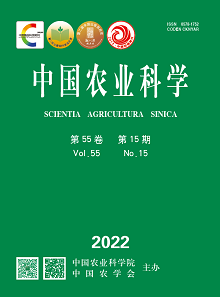【Objective】The objective of this study was to clarify the effect of very fast chilling on flavor quality of chilled lamb, so as to provide a theoretical and experimental basis, to some extent, for developing very fast chilling technology. 【Method】Lamb Silverside muscles were obtained from hot carcasses at 1 h postmortem, and were chilled under conventional chilling (chilling rate 1.94℃∙h-1) and very fast chilling (chilling rate 15.10℃∙h-1), respectively. The contents of nucleotides, free amino acids and volatile compounds were determined during storage. The taste active value and odor activity value were calculated to identify the key volatile compounds in chilled lamb. 【Result】5'-GMP, Alanine and Glutamic acid were identified as the key taste contributors in chilled lamb based on the taste activity value. 13 volatile compounds were identified as key flavor contributors of chilled lamb according to the odor activity value, including 8 aldehydes, 4 alcohols and 1 furan. Specifically, the 8 aldehydes included pentanal, (E)-2-octenal, nonanal, heptanal, (E, E)-2,4-nonadienal, (E)-2-nonenal, octanal, hexanal, the 4 alcohols included hexanol, (E)-2-octene-1-ol, octanol, 1-octen-3-ol, and the furan was 2-pentyl-furan. With the prolongation of storage time, 5'-AMP, 5'-IMP and 5'-GMP were gradually degraded into hypoxanthine and inosine, and sweet amino acids (serine), bitter amino acids (valine, methionine, leucine, tyrosine, phenylalanine, lysine, arginine) and volatile compounds (including 1-octen-3-ol, hexanal, octanal) increased significantly, which changed the flavor quality of chilled lamb in conventional chilling group. The degradation of 5'-AMP, 5'-IMP, 5'-GMP and the formation of free amino acids (including glutamic acid, glycine, proline, valine) and volatile compounds (including 1-octene-3-ol, hexanal, octanal, nonanal, heptanal, hexanol, 2-pentyl-furan) were delayed in very fast chilling group. This change maintained the freshness and reduced negative effects of bitter amino acids, aldehydes and alcohols on the flavor quality of chilled lamb. The result of the cluster analysis showed that flavor quality of chilled lamb at 72 h postmortem in very fast chilling group was similar to that of chilled lamb at 6 h postmortem in conventional chilling group. 【Conclusion】Very fast chilling could delay the changes of volatile compounds and taste compounds, therefore it maintained the flavor quality of chilled lamb in the state of pre-rigor.









